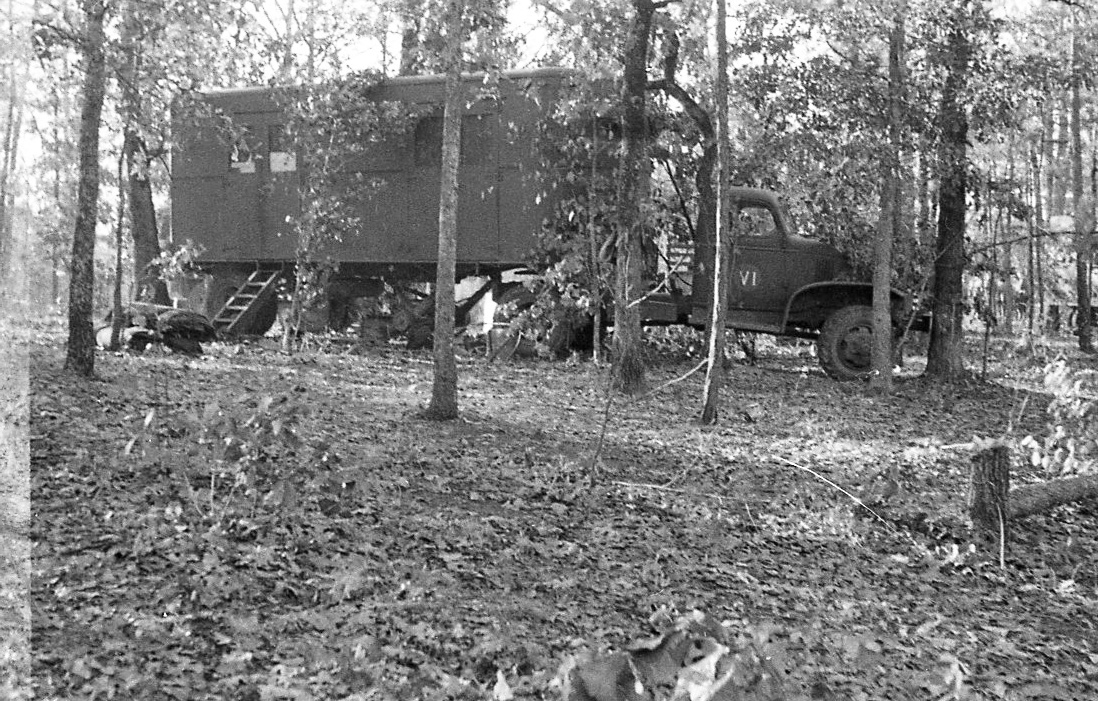My dad was a radio operator and photographer with the 114th Eng. Battalion in New Guinea. The 114th accompanied the 32nd Infantry, a unit from Michigan and Wisconsin. I have done considerable research on the 32nd and my dad's eng. battalion. The 114th was a National Guard Unit from Medford Mass. I have many negatives which I scanned of Camp Edwards, Bourne Mass, Australia and New Guinea. I am in touch with the Wisconsin War Museum who are interested in the photos. The photos are not documented so I was hoping the Museum might be able to identify people especially the portraits my dad took of medical personnel and officers. I checked with our Lawrence Light Guard of Mass. to see, if members were in New Guinea. The Medford Historical Society actually had documents from the Commander of the 114th. Nothing that helped me identify what I had for photos. I am a teacher in Falmouth Mass and research war in New Guinea every spare moment I have. Thank you
I am a teacher in Falmouth Mass and research war in New Guinea every spare moment I have.
Hi Janet. It's good that there are people around studying the more obscure theaters of the war. That was 3 year campaign so it was far from a minor theater, but its not one most Americans would even recognize as having happened at all. Sadly, there are many things about WWII that most people in America wouldn't recognize. >sigh<

A U.S. A-20G bomber of the 3rd Attack Group bombs a Japanese merchant ship off New Guinea, March 1944.
Hi Janet:
Happy to see your first post.
I will place info for you here this week. Wanted to try earlier today, but had a million things to do. I'm sure you know how that goes.
Welcome to the forum and happy hunting...
Here's two images Janet emailed to me.


Good Morning Major!
Please excuse my late reply. Thank you for replying to my introduction and sending the Japanese merchant ship photo. I have a neighbor who teaches at the Naval War College in Newport and he has helped to fill in my nonmilitary knowledge. A retired teacher in Falmouth gives lectures on the S. Pacific war on cruise ships. He is the person who gave me the "Ghost Mountain Boys," by James Campbell to initiate my background knowledge. Pacificwrecks.org, Justin Taylan is a fantastic data base for air corps records on New Guinea. Justin has taken some of Dads' airfield and airplane photos for his website. Apparently, aircraft hunters on New Guinea and JPACS MIA identification is still an ongoing situation. Thank you again for replying to my introduction.
Have a wonderful weekend!
Janet Burris-Wessling
Hi Janet. It's good that there are people around studying the more obscure theaters of the war. That was 3 year campaign so it was far from a minor theater, but its not one most Americans would even recognize as having happened at alSadlydly, there are many things about WWII that most people in America wouldn't recognize. >sigh<

A U.S. A-20G bomber of the 3rd Attack Group bombs a Japanese merchant ship off New Guinea, March 1944.
Hi Marion,
Can you please explain the difference between the VI Army Corps and the VI Army my dad was with of the 32d Infantry in New Guinea? The photo van was probably part of the Signal Corps? Thank you so much for any direction you can give me.
Janet Burris-Wessling
Hi Janet:
Happy to see your first post.
I will place info for you here this week. Wanted to try earlier today, but had a million things to do. I'm sure you know how that goes.
Welcome to the forum and happy hunting...
Basically to keep it simple, Army Groups and Corps were top echelon organizations, and a division, etc. would be part of that organization. In your father's case, his unit was under VI Army jurisdiction.
In my father's case in Europe, he was always under either VI Corps, or 5th or 7th Armies, depending on the operation.
Here's a link in the research section regarding the the organization and size of units, etc.
http://www.6thcorpscombatengineers.com/engforum/index.php?showtopic=4520
Thank you very much for the links to the breakdown of the Army divisions. I did find in my book by General Eichelberger that his I Corps later became part of the 6th Army. Because the Buna/Gona Campaigns were such a disaster, they moved people around and renamed groups. Now I am paying attention!! Because the negatives of Dad's are not labeled, I did not know, if the van with the VI was from his training at Fort Belvoir. VI had no meaning to me in my reconstruction of the campaigns until I came across the VI van picture. I have Milner's book and I actually tried to contact Mr. Caterra last year...he was there after my dad. Rutgers Oral history department was very helpful with my search. Thank you for taking the time to explain and link. I spent 1.5 years in Berrien Springs MI. at Andrews University, a Seventh Day Adventist university. Michigan was very friendly!! Gorgeous, agricultural area!
Janet B-W
Basically to keep it simple, Army Groups and Corps were top echelon organizations, and a division, etc. would be part of that organization. In your father's case, his unit was under VI Army jurisdiction.
In my father's case in Europe, he was always under either VI Corps, or 5th or 7th Armies, depending on the operation.
Here's a link in the research section regarding the the organization and size of units, etc.
http://www.6thcorpsc...?showtopic=4520
Sorry it's taken me so long to reply to you. I was so far behind. Today I'm spending hours going through a month or more of emails and catching up. Once again, so happy to be able to assist. Merry Christmas to you and yours.


